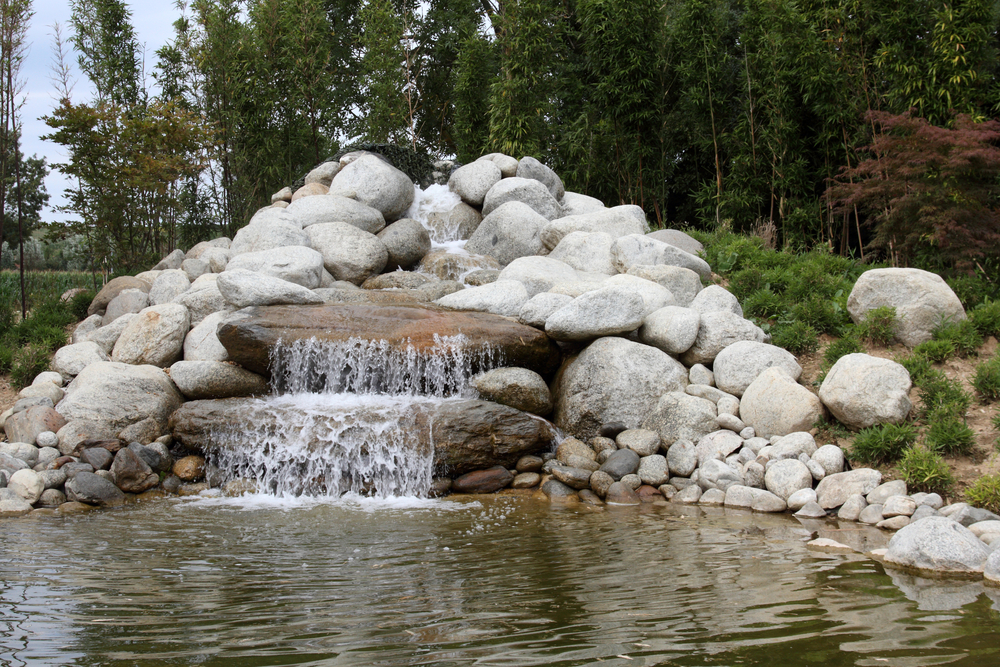

Waterscapes are landscapes where water is the dominant feature such as Hedges at Irons’ Kilcoe Castle. They are great to include in yards because they add peaceful sounds, expand the area, and create environments for wildlife.
You will want to attempt to copy nature when you design your waterscape. Be sure to add real stones and rocks, and make the water garden flow naturally throughout the land.
1.The Water Garden
The water garden is just like it sounds: plants that grow in the water. It is easy to do it yourself. All you need is some sort of structure or container to hold the water. If you are creating a hole in the ground, you need to install some sort of liner. Once you have your container or structure built, you need to add a layer of gravel or heavy clay soil. Carefully fill your structure with water, then add your plants to create your water garden.
2. Bird Baths
Bird baths come in all sorts of shapes, sizes, and styles, so that you can easily find one that works with your waterscape. Bird baths can easily blend into the rest of the waterscape, and also provide an ornamental aesthetic. Not to mention, bird baths help out the local bird and bee populations. If you place your bird bath near a window, you can even watch to see what sorts of visitors are frequenting your garden.
3. Ponds
Ponds are a great way to bring wildlife to your waterscape. You can plant some acquatic plants like water lilies and water lettuce. They live on the surface of the pond, and they feed off of the algae that naturally occurs in the pond. Once the plants are flourishing and the water turns green, you know that algae is present. Once you have algae, you can add fish. Eventually, you will see more wildlife come to your pond, like butterflies, dragonflies, and frogs. If your pond is big enough, you might even have a modest duck population.
4. Waterfalls and Streams
Waterfalls are beautifully elegant to watch, and peaceful to listen to. They can be big or small, pondless or empty into a small body of water. They can fall down steps, down a wall, or from a ledge. You can make them mimic nature by perhaps having the water land on real rocks, then routing the water into a stream that weaves itself throughout your entire waterscape.
5. Waterscape Structures
There are so many different structures you can add to your garden to make it into a waterscape:
- You can add different fountains all across your waterscape. They can be decorative or more practical (in that they water your plants).
- If your pond is large, you could build a small bridge to cross over it.
- You can create a small landing out of a boulder or several rocks, located right on the edge of your waterfall for a peaceful reading spot.
- You could install lighting around the streams, in the fountains, and behind the waterfalls to create a more magical setting.
Tips for Success
In order to have a thriving waterscape, you should try to:
- grow plants that can tolerate a lot of moisture.
- use the resources around you to make your waterscape more affordable and natural.
- think about the wildlife and what they need.
- use multiple different waterscape features like waterfalls, streams, ponds, and bird baths.
Conclusion
Waterscapes are a perfect opportunity for you to get creative on the land that you have. You can grow all sorts of plant varieties that you would not normally have in a regular garden. You can encourage new wildlife to come to your yard, and you can create a peaceful environment for a walk or a read.
